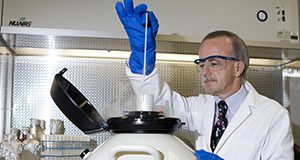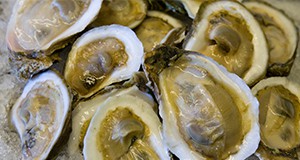
Germplasm refers to the living genetic resource of such biological materials as seeds, pollen, animal sperm, eggs, embryos, and larvae. Cryopreservation maintains these materials at extremely low temperatures. The technology is used in medicine as well as to maintain biological diversity, preserve genetic resources, support breeding programs, and conserve endangered species. This 10-page fact sheet written by Huiping Yang and Terrence R. Tiersch and published by the UF/IFAS School of Forest Resources and Conservation Program in Fisheries and Aquatic Sciences introduces the basic concepts, history, principles, and applications of germplasm cryopreservation technology.
https://edis.ifas.ufl.edu/fa223
Tag: Huiping Yang
Tetraploid Induction and Establishment of Breeding Stocks for All-Triploid Seed Production
Triploid-tetraploid breeding technology has been applied to commercial oyster aquaculture worldwide. Triploid oysters are becoming the preferred aquaculture product because of their fast growth, better meat quality, and year-round harvest. Tetraploids are essential for triploid oyster aquaculture because commercial production of all-triploid seed depends on the availability of tetraploids for reproductive materials. This 8-page fact sheet written by Huiping Yang, Ximing Guo, and John Scarpa and published by the UF/IFAS School of Forest Resources and Conservation, Program in Fisheries and Aquatic Sciences, conveys basic knowledge about tetraploid induction and breeding to commercial shellfish culturists and the general public.
http://edis.ifas.ufl.edu/fa215
Production and Performance of Triploid Oysters for Aquaculture

This 9-page fact sheet written by Huiping Yang, Natalie Simon, and Leslie Sturmer and published by the Program in Fisheries and Aquatic Sciences of the UF/IFAS School of Forest Resources and Conservation focused on basic aspects of triploid oyster aquaculture, including the general oyster aquaculture industry, the approaches for triploid induction, performance of triploids, and correlated ploidy determination to convey basic knowledge of triploid oyster aquaculture to the oyster industry and the general public.
http://edis.ifas.ufl.edu/fa208
Molluscan Shellfish Aquaculture and Production

Molluscan shellfish aquaculture provides high quality and high value seafood for human consumption, and shellfish provide environmentally beneficial ecosystem services, such as nutrient extraction and water filtration, to the environment in which they are grown. In the past five decades, global fisheries and aquaculture have grown steadily, and seafood consumption per capita has increased. Molluscan shellfish has traditionally been a major component of world aquaculture. Today, molluscs are cultured in 76 countries. This 8-page fact sheet written by Huiping Yang, Leslie N. Sturmer, and Shirley Baker describes molluscan shellfish aquaculture in the United States and worldwide and outlines molluscan shellfish aquaculture stages and methodologies.
http://edis.ifas.ufl.edu/fa191
